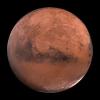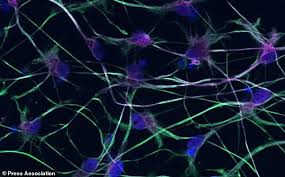
Breaking News
 Wash Post Editorial Board Turns Against Climate Agenda?!
Wash Post Editorial Board Turns Against Climate Agenda?!
 One Year Ago I Predicted and Described in Detail Huge Mars AI Plans that Elon Musk Confirmed...
One Year Ago I Predicted and Described in Detail Huge Mars AI Plans that Elon Musk Confirmed...
 British Teachers To "Spot Misogyny" In Boys And Target Them For Reeducation
British Teachers To "Spot Misogyny" In Boys And Target Them For Reeducation
 Democrats Refuse To Release Post-Mortem Of 2024 Election Loss, DNC Chair Says
Democrats Refuse To Release Post-Mortem Of 2024 Election Loss, DNC Chair Says
Top Tech News
 This tiny dev board is packed with features for ambitious makers
This tiny dev board is packed with features for ambitious makers
 Scientists Discover Gel to Regrow Tooth Enamel
Scientists Discover Gel to Regrow Tooth Enamel
 Vitamin C and Dandelion Root Killing Cancer Cells -- as Former CDC Director Calls for COVID-19...
Vitamin C and Dandelion Root Killing Cancer Cells -- as Former CDC Director Calls for COVID-19...
 Galactic Brain: US firm plans space-based data centers, power grid to challenge China
Galactic Brain: US firm plans space-based data centers, power grid to challenge China
 A microbial cleanup for glyphosate just earned a patent. Here's why that matters
A microbial cleanup for glyphosate just earned a patent. Here's why that matters
 Japan Breaks Internet Speed Record with 5 Million Times Faster Data Transfer
Japan Breaks Internet Speed Record with 5 Million Times Faster Data Transfer
 Advanced Propulsion Resources Part 1 of 2
Advanced Propulsion Resources Part 1 of 2
 PulsarFusion a forward-thinking UK aerospace company, is pushing the boundaries of space travel...
PulsarFusion a forward-thinking UK aerospace company, is pushing the boundaries of space travel...
 Dinky little laser box throws big-screen entertainment from inches away
Dinky little laser box throws big-screen entertainment from inches away
 'World's first' sodium-ion flashlight shines bright even at -40 ºF
'World's first' sodium-ion flashlight shines bright even at -40 ºF
Motor neurone disease breakthrough as scientists identify cells thought to cause the cruel...

A cure for motor neurone disease – which killed Professor Stephen Hawking – has moved one step closer, scientists believe.
The cruel condition causes signals from motor neurone nerve cells in the brain and spinal cord to fail.
Motor neurones control crucial muscle activity and if they are damaged and break down some patients eventually find it impossible to walk or even speak.
Now researchers have found that another type of brain cell – thought to be harmless – could play a role in the disease, which is also known as ALS (amyotrophic lateral sclerosis).
Tests of cells from skin samples of patients with MND, also known as ALS, showed glial cells can damage motor neurones.
University of St Andrews researchers said glial cells normally support neurones in the brain and spinal cord.



